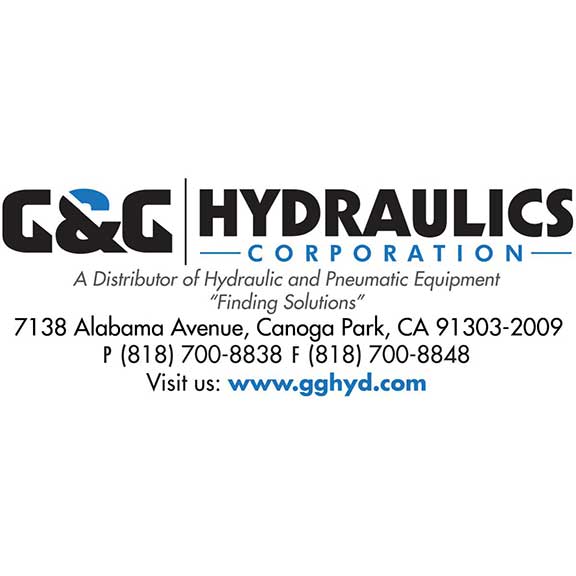Gauges
Hydraulic Pressure Gauges
Being able to monitor the various pressures within your hydraulic system is vital to the efficiency and safety of the operation. Fortunately, our inventory of pressure gauges places highly visible tracking wherever you need it. Controlled deployment of power prevents errors and malfunctions from occurring.
- $152.19 $171.00
- $85.50 $95.80
- $80.86 $90.60
- $135.28 $152.00
- $19.25
- $99.82 $117.44
- $116.29 $136.81
- $126.50 $148.82
- $126.50 $148.82
- $158.31 $186.25
- $158.31 $186.25
- $268.09 $315.40
- $268.09 $315.40
- $268.09 $315.40
- $268.09 $315.40
- $296.35 $348.65
- $296.35 $348.65
- $296.35 $348.65
- $355.01 $417.66
- $355.01 $417.66
- $355.01 $417.66
- $392.24 $461.46
- $392.24 $461.46
- $392.24 $461.46
- $432.15
20G1627-RW132A3N317KG
Dry Pressure Gauge, 2½” Dial, Stainless Steel Case, ¼” NPT Bottom Connection (Brass), 0-300 PSI (equivalent to RW132A3N317KG)$26.85 $30.7520G1628-RW132A3N327KG
Dry Pressure Gauge, 2½” Dial, Stainless Steel Case, ¼” NPT Bottom Connection (Brass), 0-3,000 PSI (equivalent to RW132A3N327KG)$26.85 $30.75252426-662536106122
SPX Power Team Gauge 10,000 PSI, 4" dia. UPC #662536106122$1,313.02 $1,475.30350431-662536160339
SPX Power Team Fluid Level/ Teamperature Gauge UPC #662536160339$143.74 $161.50- $54.15 $57.00
8700-60-029292142083
Coilhose 1 1/2" Dial Gauge, 1/8" Back Mount, 0-60 psi UPC #029292142083$17.93 $23.919040-662536181235
SPX Power Team Analog Gauge, 2.5" Universal, Filled, 2500/500 PSI UPC #662536181235$169.63 $190.60- $174.44 $196.00
- $929.51 $1,044.39
- $311.14 $349.60
- $377.18 $423.80
- $378.34 $425.10
9055-662536361163
SPX Power Team Analog Gauge, 4", 0-10 Ton C/RD/RH+ Dry UPC #662536361163$311.14 $349.60- $311.14 $349.60
- $311.14 $349.60
9065-662536181426
SPX Power Team Analog Gauge, 4" 0-30 Ton RH/RLS/RSS, Dry 2000 PSI UPC #662536181426$311.14 $349.609067-662536181433
SPX Power Team Analog Gauge, 4" 0-50 Ton RH/RLS/RSS Dry 2000 PSI UPC #662536181433$347.10 $390.009069-662536181440
SPX Power Team Analog Gauge, 4", 0-55 Ton,C/R/RA/RD,Dry 2000 PSI UPC #662536181440$311.14 $349.60- $379.59 $426.50
9075-662536361255
SPX Power Team Analog Gauge 4" 0-100 Ton C/R/RA/RD/+ Dry 2000 PSI UPC #662536361255$311.14 $349.609077-662536361262
SPX Power Team Analog Gauge 4" 0-150 Ton C/R/RD/RLS, Dry 2000 PSI UPC #662536361262$311.14 $349.60
Accurate & Dependable Gauges
Made of stainless steel, and vibration-dampening technology ensures corrosion-free operation. G&G Hydraulics gauges are suited for a wide array of PSI ratings and provide an accurate readout of pressure in the water, oil, gas, and air systems. Keep a close eye on and accurately track the pressures in your hydraulic rig with a new hydraulic pressure gauge.
The liquid-filled analog pressure gauge helps indicate malfunctions of the equipment, preventing potential delays in production. Our dial and digital hydraulic pressure gauges (and hydraulic pressure meters) are made for use in high-cycle hydraulic applications such as testing and monitoring system pressure for cylinders, tool holding, hydraulic pressure, and tooling systems.
Why Shop From Us?
- Certified Seller: G&G Hydraulics is a certified seller of many of the top brands of hydraulic and pneumatic parts. With over 1,000 five-star ratings, we’re a trusted brand that you can count on for any big or small project.
- Excellent Customer Service: Looking for a specific liquid-filled hydraulic pressure gauge, fittings, valves, or any other components? Need help selecting the right product? Contact our experts via phone, email, or live chat. We’ll connect you with our knowledgeable technicians.
Risk-Free Guarantee: Customer satisfaction is a top priority – all orders are shipped on time and arrive in working condition. If not, submit a return request, and we’ll make it right.
Your Quality Source
Frequently Asked Questions
The difference between a hydraulic pressure meter and a pressure meter:
In everyday shop-talk, the words blur, yet the hardware is different. A “gauge” mounts on the machine – digital hydraulic pressure gauges or analog pressure gauges – and shows live system PSI. A “meter” is portable, built for test points, and often packs a pressure snubber plus data-logging electronics. We treat meters as diagnostic tools and gauges as permanent “dashboards.”
Are digital pressure gauges more accurate than analog ones?
Generally, yes. These hydraulic pressure gauges utilize strain-gage sensors and micro-calibration, ensuring errors remain within ±0.25% of full scale. A good Bourdon-tube dial sits closer to ±1%. As a bonus, digitals keep that precision independent of vibration, making them perfect for mobile rigs that rattle down dirt roads all week.
When to go with an analog gauge over a digital one:
Opt for an analog pressure gauge when you require an instant needle sweep at a glance, without the need for batteries, and immunity to electrical noise. Steel mills, boiler rooms – places with steam or high electromagnetic fields – still favor a liquid-filled dial hydraulic pressure gauge because the glycerin damps vibration and the case survives heat that can cook LCDs in digital hydraulic pressure gauges.
What pressure ranges and materials do you stock?
We keep hundreds of hydraulic pressure meters and gauges on our shelves, ready to go. For instance, we have:
- Brass cases with 0-200 PSI for low-pressure water circuits
- Stainless 316 with 0-6,000 PSI for oil and corrosive media
- All-welded internals with up to 20,000 PSI for ultra-high-pressure tooling
Every unit is factory leak-tested and rated to ASME B40 or EN 837, so you can match spec and rest easy.
How do hydraulic pressure gauges benefit system safety?
They spot pressure spikes early, preventing bursts or failures. Also, they’re great for spotting occasional variance in system operations – something you might miss if you're doing occasional diagnostic spot tests. Our stainless steel gauges, for instance, resist corrosion and can ensure leak-free operations across wide ratings.




















































